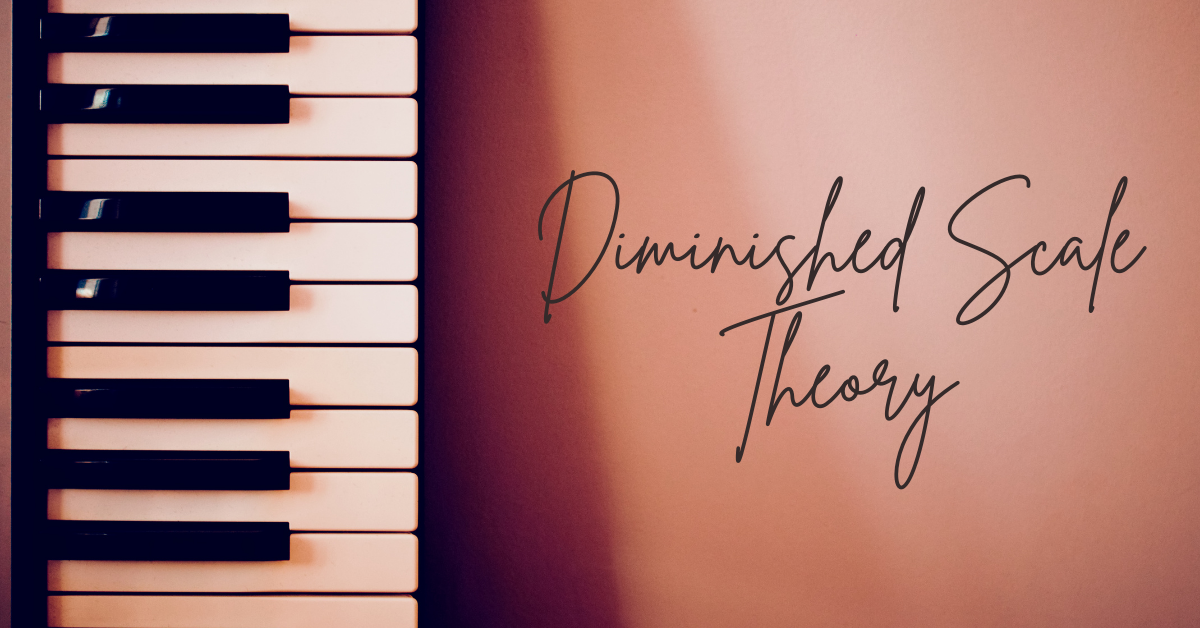Diminished Scale Theory - An Exciting Way To Spice Up Your Playing!

Diminished scale theory is usually seen as a dense and confusing topic that is reserved for advanced theory and harmony classes at the university level. Many advanced masterclasses have featured some of the world's greatest musicians talking about how to apply the diminished scale to improvisation and composition. And while diminished scale theory can be a very deep field of study, many students appreciate having a basic understanding of what the diminished scale is and how it is used in music. So in this article, we'll get you started with an introduction to diminished scale theory.
Diminished Scale Theory: What is the Diminished Scale?
The diminished scale has a few different names, including the octatonic scale and the half-whole scale, but they're all the same scale. We'll discuss each briefly.
The diminished scale can be created by stacking two diminished 7th chords a half-step apart on top of one another:
Notice that the scale has eight unique notes, thus the name octatonic (which literally means eight tones). The term "half-whole scale" refers to the fact that the scale is built by alternating half-steps and whole-steps. Starting on 'C,' the scale moves up a half-step, then a whole-step, then half, then whole, etc.
There are really only 3 diminished scales - C, C#, and D. When we build the scale starting on D# we get the same scale as the C diminished scale, as it is just an inversion of the C diminished scale. The same is true for the other remaining starting notes.
Diminished Scale Theory: How Is It Used?
Ok, this is where things can start to get... advanced. The diminished scale has an incredible amount of theory built into just eight notes. We are only scratching the surface with what we're going to discuss below, but what you're about to learn is perhaps the most important part of diminished scale theory and the reason it has so many applications and harmonic potential.
Remember that every 7th chord has a set of guide tones, which refer to the 3rd and 7th of the chord. Guide tones are important because they give a chord its quality - major, minor, dominant. In dominant chords, the 3rd and 7th are a tritone away (an interval of a diminished 5th or augmented 4th). So the big secret about the diminished scale is that it contains 4 sets of tritones, which means... 8 potential dominant chords in this one scale!
Let's find those tritone sets and their corresponding dominant chords in a C diminished scale:
- C and F# = D7 chord
- D# and A = B7 chord
- C# and G = A7 chord
- E and Bb = C7 chord
You might be saying, "hey, that's only 4 dominant chords. You said there were 8. What gives?" Remember that every dominant chord has a tritone substitution! When you consider the tritone subs for each dominant chord you get the following:
- C and F# = D7 and Ab7 chord
- D# and A = B7 and F7 chord
- C# and G = A7 and Eb7 chord
- E and Bb = C7 and F#7 chord
Also remember that every dominant chord can resolve to its 'I' chord. So consider the harmonic POWER inherent in the diminished scale because it has the ability to allow you to resolve to 8 different 'I' chords. A major scale really only has one (or two at most) dominant chords inherent in the scale.

